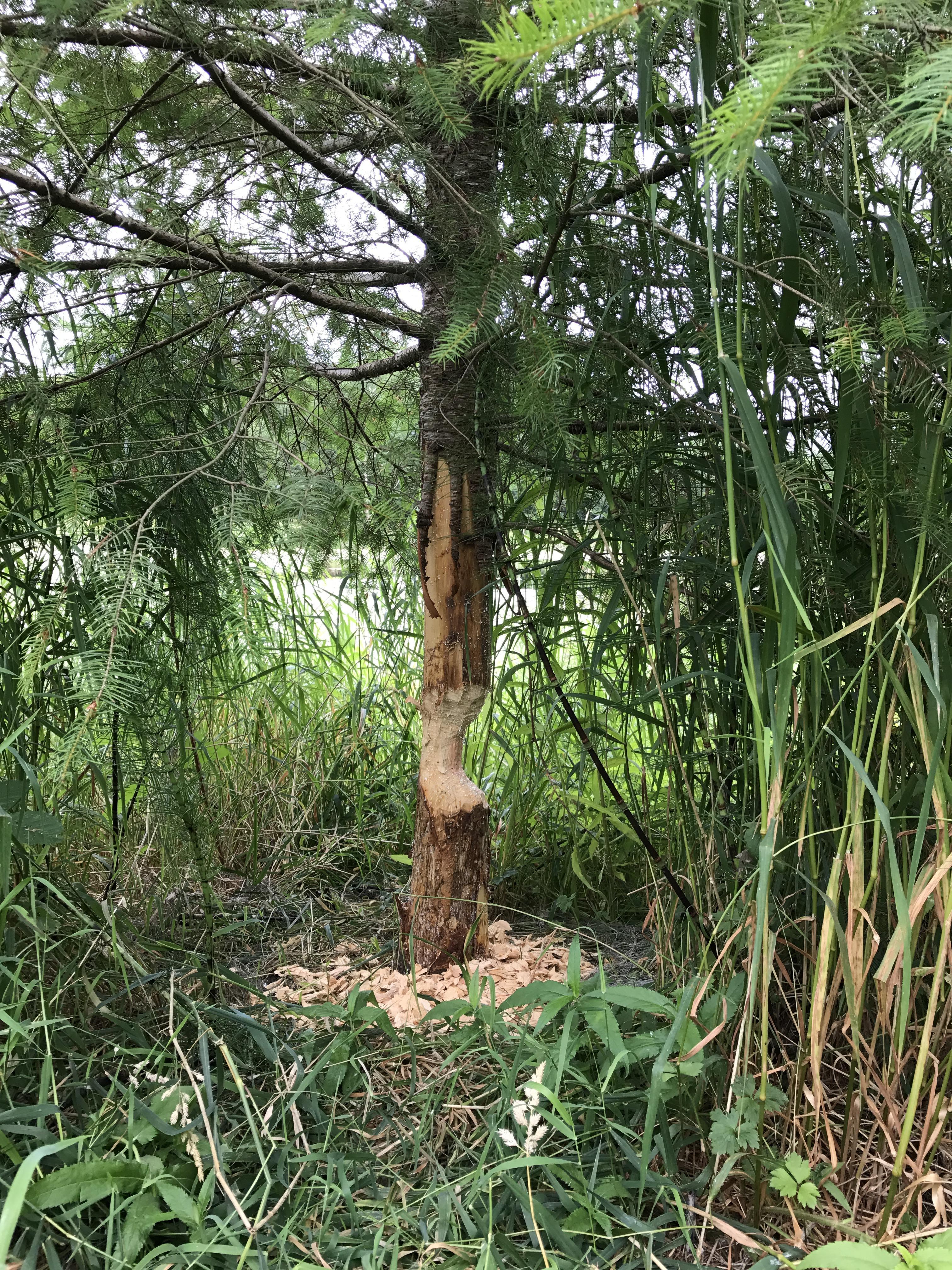Beaver-related problems and solutions
Beavers activities benefit benefit the natural environment in numerous ways. Problems arise because humans live in and travel through areas where beavers also live. That is, human land uses sometimes conflict with beaver land uses.
How beaver problems develop
Wide-scale trapping in Washington State nearly extirpated beavers by the mid-1800s. Their fur was sold to make hats in England and other places. Beaver relocations in Washington began in the early to mid-1900s. These relocations were happening primarily so people could again trap beavers for their fur, but a few people recognized the benefits beavers provide.
As beaver populations began to make a come-back, trapping also continued. But in the time period of 1999-2000, three things happened that has increased beaver populations in King County and elsewhere:
- In 1999, Chinook salmon were listed as a Threatened species in Puget Sound under the Endangered Species Act. Since then, many millions of dollars have been spent on stream and river restoration, which includes planting lots of trees and shrubs. These trees and shrubs are beaver food.
- In 2000, voters in Washington State approved a ban on "body gripping traps." Body-gripping traps are lethal traps that were by far the most commonly used traps for beavers and many other furbearers. Trapping continues in Washington, but the non-body gripping traps are expensive, heavy to work with, and harder to use. This change in law resulted in a dramatic decline (around 77 percent) in recreational trapping of beavers statewide.
- The value of fur also declined during this time period.
Because of these three changes, beaver populations are now growing and expanding into areas that have not had beaver present since before the area was first settled by Europeans. This current human landscape we have created was not built with beavers in mind. And to make things even more challenging, the extreme weather events resulting from climate change also bring more water into stream systems at times.
What are the solutions?
If your problem is a result of back-water flooding from beaver dams, one or more "engineered solution" may be able to help. Water level control devices allow the beavers to remain present while water continues to flow downstream. If beavers are cutting your trees and shrubs, there are a few different solutions. This table provides a summary of possible solutions to different beaver challenges. It also presents the pros and cons of different solutions and shows a rough estimate of cost.
Solutions to flooding
If a beaver is making a dam on your property and the water is causing property damage or safety issues, you have a few options to consider:
- You may have a pond-leveling device or culvert fencing installed. The idea behind these devices is to allow the beavers to stay on location while water levels are kept at height that is acceptable to humans. See our Resources page for more information.
- You could get a permit to remove the dam. But the beavers will likely rebuild the dam, sometimes overnight.
- Live trapping and relocation is often part of a solution. But trapping by itself won't solve the problem. Either the surrounding land cover needs to change to make it unattractive to the next beavers that come along. Or more likely, other solutions should be put in place prior to the next family of beavers moving in. That way when the next beavers move in, they won't cause the same problems.
To do nearly all in-stream work in Washington, you need to get a permit from the Washington Department of Fish and Wildlife. WDFW has a web page describing Hydraulic Project Approvals, which are required under the "Hydraulic Code" (Chapter 77.55 RCW) passed in 1949. In many instances a permit from the King County Department of Permitting and Environmental Services is also required. Beavers don’t need the same permits, so they have an advantage over people in their response times.
For more information, see our Resources page.
Protecting trees from beavers
Beavers are experts at removing trees and other vegetation. Here are a few options for protecting your vegetation from beavers:
- Fencing placed between your vegetation and the beavers can be extremely effective. You can fence groups of plants, or you can individually "wrap" trees. Putting fence around a tree doesn't have to be complicated, but you can find more on this topic in our Technical Paper #1.
- Similar to fencing trees, you can also paint the lower 4 feet with a mix of latex paint and sand. Beavers don't like to chew through the grit of the sand.
- Plant species that beavers don't prefer. They do prefer willows and cottonwood. They may generally avoid Pacific ninebark, Sitka spruce, the true firs, black twinberry, red elderberry, and young cascara.

 Translate
Translate
